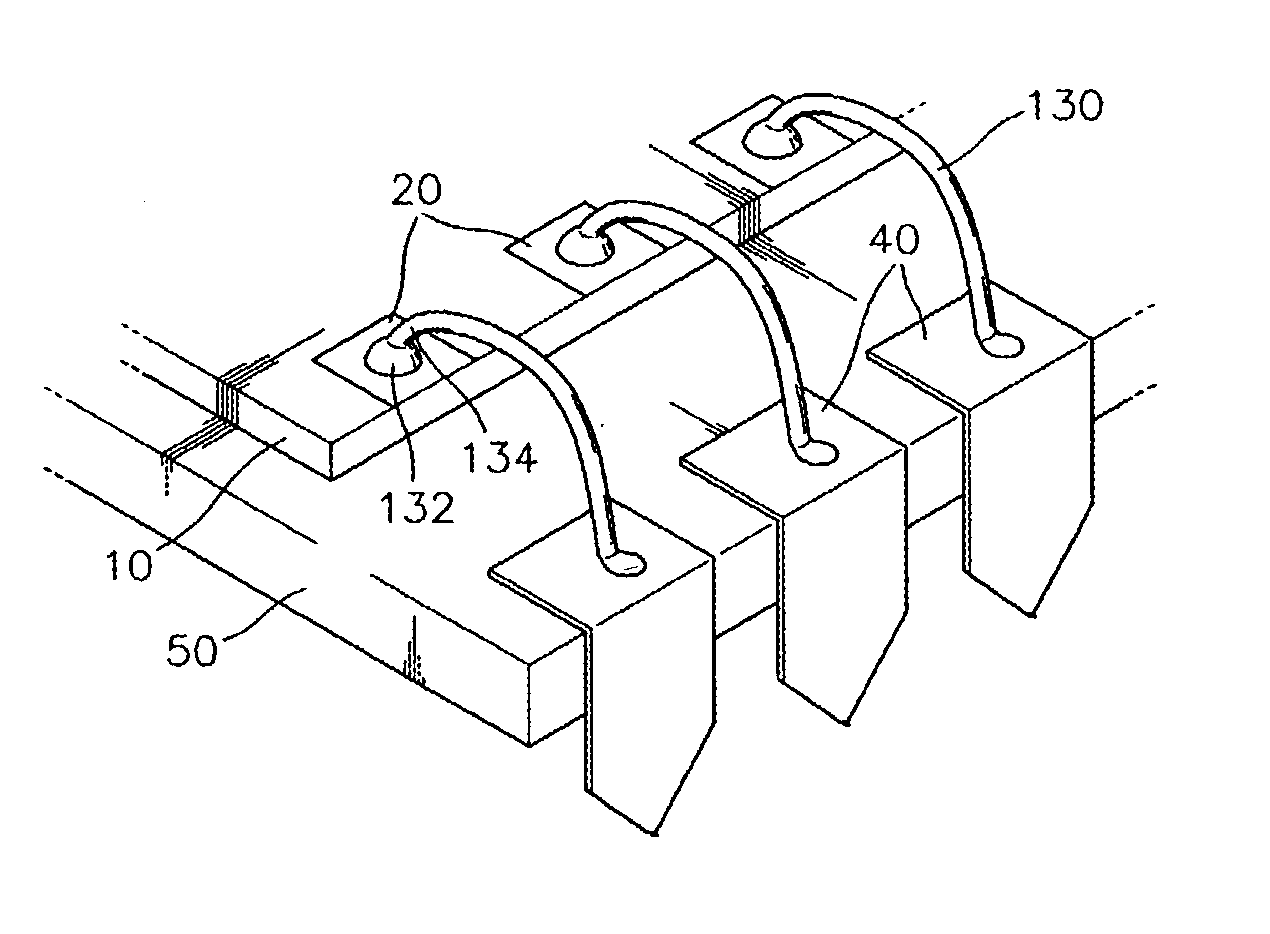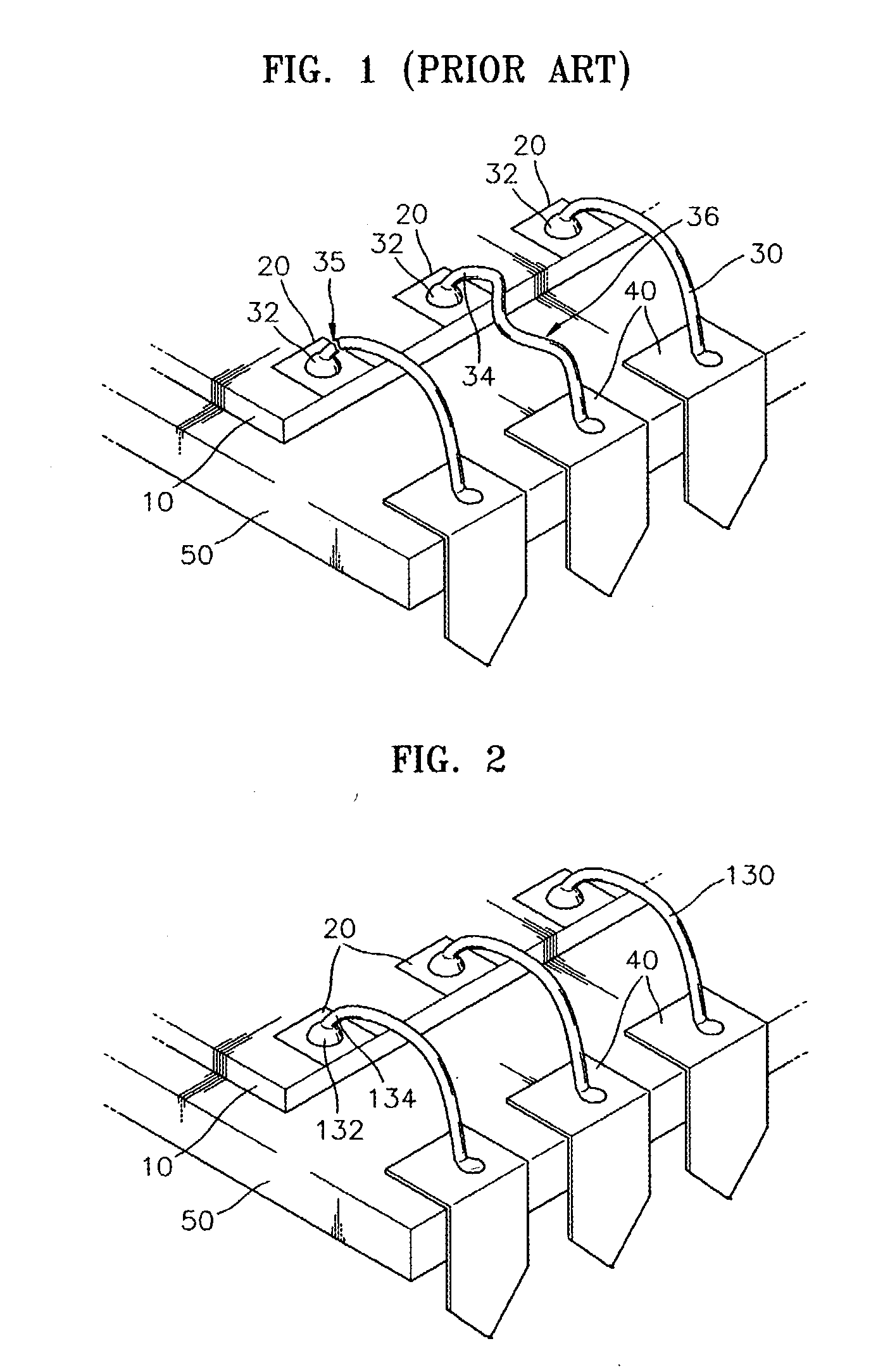Gold-silver bonding wire for semiconductor device
a technology of silver-silver bonding and semiconductor devices, which is applied in the direction of solid-state devices, semiconductor devices, basic electric elements, etc., can solve the problems of gold being highly ductile and malleable, the breakage occurring near the ball neck in the loop formation remains unsolved, and the reliability is low
- Summary
- Abstract
- Description
- Claims
- Application Information
AI Technical Summary
Benefits of technology
Problems solved by technology
Method used
Image
Examples
Embodiment Construction
53 0.1 20 5 10 36 4 20 37 15 0.03 38 45 1 0.002 39 30 1 150 40 10 1 5 20
[0034] With the bonding wires prepared in the compositions of Table 1, the following experimental results in Table 2 were obtained. As shown in Table 2, tensile strength as a mechanical characteristic of the bonding wires, degree of loop sweeping, bondability after bonding and after a thermal process, loop height deviation, loop shape, ball shape, and ball hardness were measured.
[0035] The tensile strength was measured with respect to breaking load and elongation using an AND RTC 1150A instrument at a cross head speed of 10 mm / min and a gage length of 100 mm at 20.degree. C.
[0036] The degree of loop sweeping was measured by molding the bonded chip and lead frame with an epoxy molding compound resin and imaging the same using transmission X-rays. A loop displacement in the direction in which the epoxy molding compound resin flows was measured, and a percentage of the loop displacement with respect to the distance...
PUM
| Property | Measurement | Unit |
|---|---|---|
| speed | aaaaa | aaaaa |
| purity | aaaaa | aaaaa |
| weight | aaaaa | aaaaa |
Abstract
Description
Claims
Application Information
 Login to View More
Login to View More - R&D
- Intellectual Property
- Life Sciences
- Materials
- Tech Scout
- Unparalleled Data Quality
- Higher Quality Content
- 60% Fewer Hallucinations
Browse by: Latest US Patents, China's latest patents, Technical Efficacy Thesaurus, Application Domain, Technology Topic, Popular Technical Reports.
© 2025 PatSnap. All rights reserved.Legal|Privacy policy|Modern Slavery Act Transparency Statement|Sitemap|About US| Contact US: help@patsnap.com


